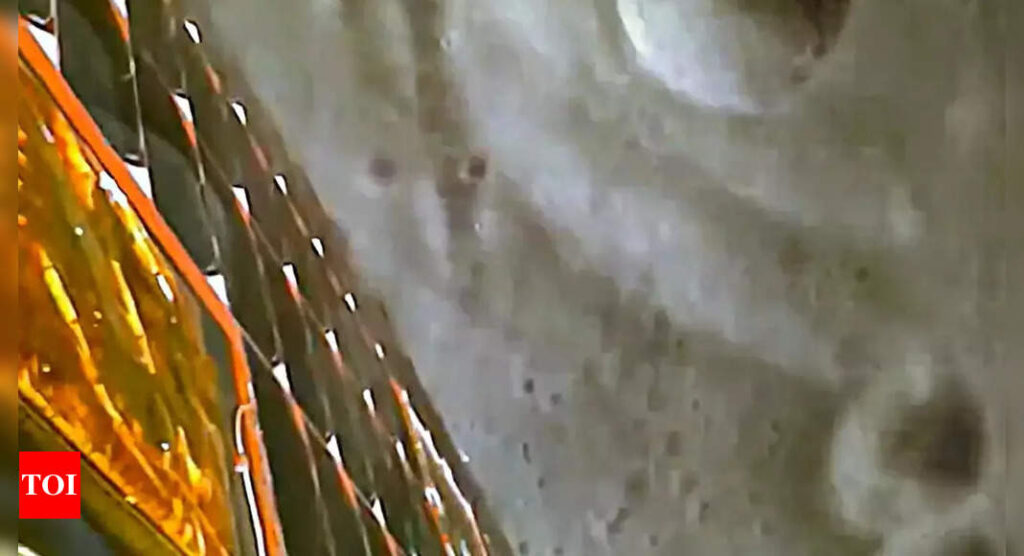[ad_1]
In his first full-fledged interaction since lander Vikram‘s precision landing and the deployment of the rover, Chandrayaan-3 project director P Veeramuthuvel told TOI that the progress of the scientific experiments so far had infused confidence about the possibility of good outcomes.
“None of this would have been possible without the relentless effort of hundreds of Isro colleagues, especially those from the subsystems — navigation-guidance-and-control, propulsion, sensors, and all the mainframe subsystems) — and the guidance of URSC director M Sankaran and the Isro top management,” he said.
Pointing out that the rover operations weren’t fully autonomous, Veeramuthuvel said Pragyan’s movements were riddled with multiple challenges, each of which would need to be overcome one at a time with the involvement of the ground teams.

03:01
Chandrayaan-3 shares footage of how the Moon looked like prior to landing
‘Turnaround time between each rover movement op is 5 hours’
Moving the rover from point A to B involves many steps. For every path planning, onboard navigation camera data must be downloaded to ground for generation of a digital elevation model (DEM). Then the ground and mechanisms team will decide which path to take and uplink the command for the rover to follow,” he said. As for the rover’s limitations, the maximum DEM that can be generated is for five metres each time the navigation camera sends images. “This means every time the rover is commanded to move, it can at best cover five metres. Even there, there are challenges of obstacles, etc. We were very anxious about the first crater, but that obstacle has been overcome,” Veeramuthuvel said.
Isro has already done multiple rover movements. “If you see, it is not like a big rover. Within the limited resources, we’ve put in place miniature systems that are state-of-the-art. But there are limitations such as non-availability of telemetry and telecommunications 24/7, the need to track the sun continuously and so, the turnaround time between each movement operation is around five hours,” the project director said.
The turnaround time between one rover mobility and another is around five hours. “The Sun is not static there. Each day, there’s a 12° rotation, which needs to be accounted for, as unlike the lander which has solar panels covered on three sides, the rover has deployable solar panel, where one side is fully mounted with solar cells but on the other side, only half the space is available,” he said.
The data rate from the rover is also limited given that it can only communicate with the lander, from where the Isro control room needs to download to ground. This also consumes time as the scientists need to look at the science data coming in from the payloads. “So, each movement of the rover is very carefully planned and we are confident of good work being done there,” Veeramuthuvel said.
[ad_2]
Source link










More Stories
We can’t wait to face India in the final: Pat Cummins | Cricket News
Railways plans 3,000 additional trains in next 4-5 years to minimise number of waitlisted tickets | India News
Faridabad: Man dies after ‘falling from hotel room window’ while partying with friends